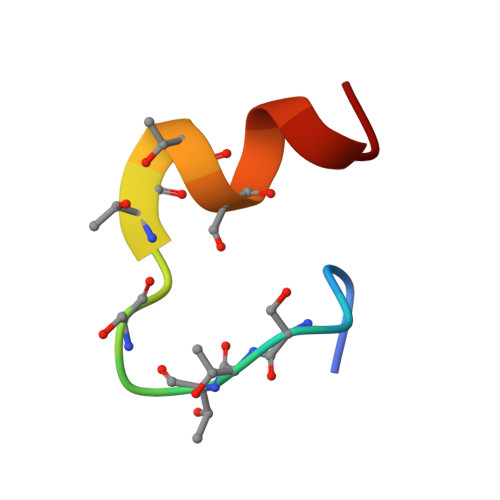The arrestin-bound conformation and dynamics of the phosphorylated carboxy-terminal region of rhodopsin.
Kisselev, O.G., McDowell, J.H., Hargrave, P.A.(2004) FEBS Lett 564: 307-311
- PubMed: 15111114
- DOI: https://doi.org/10.1016/S0014-5793(04)00226-1
- Primary Citation of Related Structures:
1NZS - PubMed Abstract:
Visual arrestin binds to the phosphorylated carboxy-terminal region of rhodopsin to block interactions with transducin and terminate signaling in the rod photoreceptor cells. A synthetic seven-phospho-peptide from the C-terminal region of rhodopsin, Rh(330-348), has been shown to bind arrestin and mimic inhibition of signal transduction. In this study, we examine conformational changes in this synthetic peptide upon binding to arrestin by high-resolution proton nuclear magnetic resonance (NMR). We show that the peptide is completely disordered in solution, but becomes structured upon binding to arrestin. A control, unphosphorylated peptide that fails to bind to arrestin remains highly disordered. Specific NMR distance constraints are used to model the arrestin-bound conformation. The models suggest that the phosphorylated carboxy-terminal region of rhodopsin, Rh(330-348), undergoes significant conformational changes and becomes structured upon binding to arrestin.
Organizational Affiliation:
Department of Ophthalmology and Biochemistry, Saint Louis University School of Medicine, 1755 S. Grand Blvd., St. Louis, MO 63104, USA. kisselev@slu.edu
















